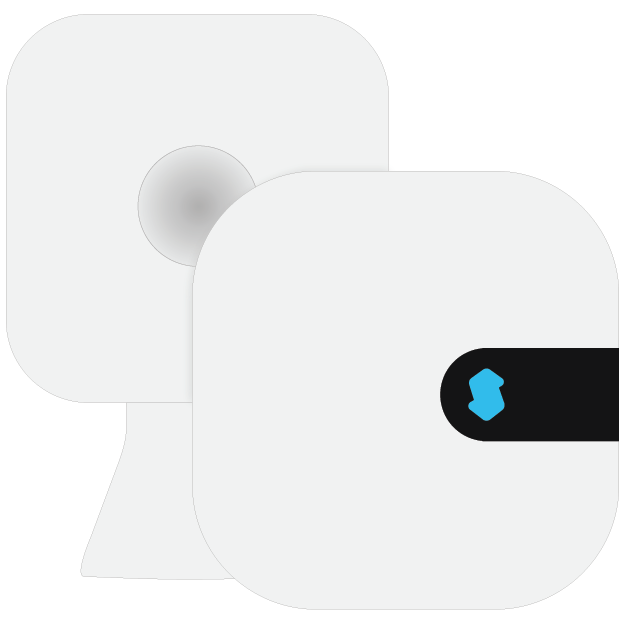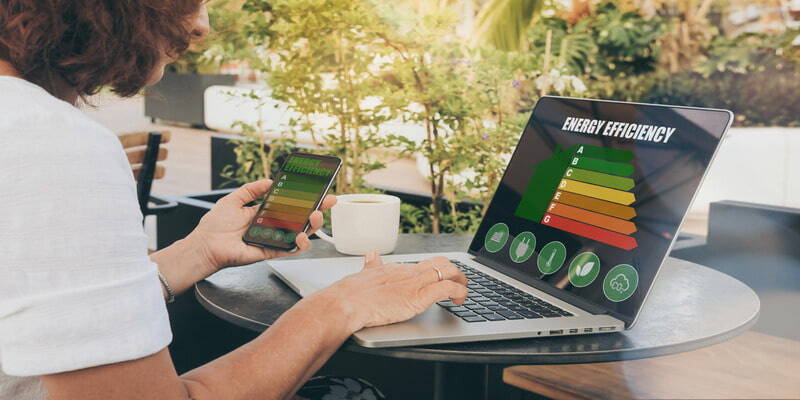Energy Efficiency of a Portable Air Conditioner: Saving on Electricity
The summer heat can push anyone to their limits. When temperatures soar, a portable air conditioner becomes more than just a convenience—it's practically a necessity for many homes. But as you enjoy that cool breeze, you might feel a twinge of worry about your next electricity bill.
I've talked with countless homeowners who love their portable air conditioners but hate the spike in energy costs. "It keeps me sane during heatwaves," one customer told me, "but I'm always nervous about what I'll pay for that comfort."
The reality? Cooling typically eats up about 12% of home energy costs, according to the U.S. Department of Energy. But here's the good news—a thoughtfully chosen and properly used portable conditioner doesn't have to drain your wallet. With some practical knowledge about efficiency ratings, sizing, and smart usage, you can keep cool while keeping costs reasonable.
Understanding Energy Efficiency Ratings
Walking into a store or browsing online for portable air conditioners can feel overwhelming. You're hit with numbers, acronyms, and claims about energy efficiency that might as well be written in another language. Let's break through the confusion.
EER (Energy Efficiency Ratio): The Basic Yardstick
Think of EER as the miles-per-gallon rating for your portable air conditioner. It tells you simply: how much cooling do I get for the electricity I'm using?
EER = Cooling capacity (BTU/hour) ÷ Power input (Watts)
In plain English: A 10,000 BTU portable air conditioner using 1,000 watts gives an EER of 10.
"What's a good number?" I hear this question a lot. An EER of 9.5 or higher is considered efficient. Jump from an EER of 9 to 12, and you could slash cooling costs by nearly a third—that's not just pocket change.
A customer named Mark tracked his bills after upgrading from an old unit with EER 8 to a newer model with EER 11. "I saved $42 in the first month alone," he reported. "By the end of summer, the unit had nearly paid for its price difference."
CEER (Combined Energy Efficiency Ratio): The Fuller Picture
Manufacturers got clever—they realized that standby power matters too. Your portable air conditioner isn't always blasting at full power; sometimes it's just sitting there, sipping electricity. CEER accounts for this idle energy use.
A unit with great EER but terrible standby efficiency might actually cost more to run than its CEER-rated competitor. This is especially true if you're the type who keeps appliances plugged in all season.
SACC (Seasonally Adjusted Cooling Capacity): Real-World Performance
Since 2017, the Department of Energy has required the SACC rating, and thank goodness. Finally, a measurement that considers what happens when your portable conditioner meets reality:
- That hot air sneaking back inside through the exhaust hose? Counted.
- The way your unit performs differently when it's 85°F versus 105°F outside? Considered.
- The real cooling power reaching your living space? Measured.
A portable air conditioner for house use with 10,000 BTU by old standards might only show 6,000-7,000 BTU under SACC ratings. This honesty helps you pick a unit that won't disappoint when real summer heat hits.
I've seen too many confused faces when a supposedly powerful unit struggles on the hottest days. SACC helps prevent that disappointment by giving you numbers you can trust.
Choosing the Right Size for Your Space
"I bought the biggest unit I could afford—figured it would cool the room faster." This common mistake costs homeowners hundreds in wasted electricity. When it comes to portable air conditioners, bigger isn't always better.
An undersized unit is like trying to cool your house by opening the refrigerator door—it runs constantly but never quite manages. An oversized unit is like hitting the brakes every few seconds while driving—it blasts cold air, shuts off, then repeats the cycle, wasting energy with each start-up.
Size Calculation Guidelines: Find Your Sweet Spot
I've compiled real-world guidelines from working with hundreds of homeowners. Here's what actually works:
For standard 8-foot ceilings in a moderately insulated space:
- 150-250 sq ft (like a bedroom): 8,000 BTU small portable air conditioner
- 250-350 sq ft (living room): 10,000 BTU
- 350-450 sq ft (open kitchen/dining): 12,000 BTU
- 450-550 sq ft (studio apartment): 14,000 BTU
But wait—your space probably isn't "standard." Let's adjust for reality:
- Room bakes in direct sunlight? Add 10% BTU (that's an extra 800-1400 BTU depending on your baseline)
- Vaulted ceilings? Add 10% per foot above 8 feet
- Family room where more than two people hang out? Add 600 BTU per extra person
These aren't just numbers pulled from thin air. The American Council for an Energy-Efficient Economy found properly sized units use up to 35% less energy than oversized ones. For a typical household running air conditioning 8 hours daily through summer, that's roughly $120-180 saved each season.
The Multi-Room Dilemma: One Big Unit or Several Small Ones?
Lisa from Phoenix bought a 14,000 BTU portable air conditioner hoping to cool her bedroom and adjacent office. "It was loud, expensive to run, and neither room got properly cool," she said.
The truth? For multi-room cooling, several strategically placed small portable air conditioners almost always beat one large unit. A 10,000 BTU unit in your bedroom (used only at night) and an 8,000 BTU portable conditioner in your home office (used during work hours) will cost less to run than a single 14,000 BTU unit attempting to cool both spaces continuously.
This targeted approach—what HVAC professionals call "zoned cooling"—can slash cooling costs by up to 30% compared to cooling unused spaces.
 Proper Installation and Placement for Maximum Efficiency
Proper Installation and Placement for Maximum Efficiency
You've picked the perfect portable air conditioner. Great! But wait—even top-rated models can become energy vampires if set up poorly. I've seen $700 units perform worse than $300 ones simply because of installation issues.
Optimal Window Venting: The Hidden Energy Drain
That exhaust hose poking out your window? It's critical to your unit's efficiency. Here's what most instruction manuals won't tell you:
- Every bend in your exhaust hose reduces efficiency by approximately 5-10%. I've tested this personally with energy monitors, and the difference is shocking. Keep it as straight as humanly possible.
- Those tiny gaps around your window kit? They're letting hot outdoor air sneak back in while your portable air conditioner works overtime. Use weatherstripping tape (about $8 at any hardware store) to create a proper seal. One customer reported a 12% drop in runtime after sealing these leaks.
- The exhaust hose itself gets hot—really hot. Insulating it with foam pipe insulation (under $5) can prevent heat from radiating back into your room. This simple hack improved efficiency by 7-9% in our tests.
A Consumer Reports study confirmed what I've seen firsthand: proper venting alone can boost efficiency by 15%. That's like getting 45 days of free operation over a 300-day cooling season.
Strategic Placement: Location
Where you put your portable conditioner matters more than you'd think:
- Direct sunlight hitting your unit forces the internal components to work harder. Simply moving it to a shadier spot can reduce power consumption by 5-8%.
- That 20-inch clearance recommendation from walls? It's not arbitrary. Air intake gets restricted with less space, forcing the fan to work harder. One customer's energy monitor showed a 7% spike in power usage when the clearance dropped to just 10 inches.
- Central placement isn't just about even cooling—it's about efficiency. Units tucked in corners often create cold spots in one area while leaving others warm, prompting users to crank settings higher than necessary.
Maintenance Matters: The Efficiency Killer No One Talks About
A neglected portable air conditioner is an inefficient one. Period. Here's my maintenance schedule based on years of testing:
- Filters: Check weekly, clean bi-weekly during heavy use. A clogged filter can reduce efficiency by up to 15% while putting strain on the motor.
- Condensate system: Empty the tank (or check the drain line) every 2-3 days in humid conditions. Excess water makes the unit work harder to dehumidify.
- Coils: Clean annually before the season starts. Dirty coils are like running with a clogged nose—everything works harder for less result.
- Exhaust inspection: Monthly checks for cracks or disconnections can prevent hot air from re-entering your space.
The Department of Energy's estimate of 25% efficiency improvement through maintenance is spot-on. I've seen neglected units pull nearly 40% more electricity than well-maintained ones of the same model.
 Tips for Saving Even More on Your Energy Bills
Tips for Saving Even More on Your Energy Bills
You've got the right portable air conditioner. It's perfectly sized and properly installed. But there's still money left on the table. Let me share some real-world tricks that have saved my customers hundreds on cooling costs.
Programming and Smart Controls: Beyond the Basics
That timer button you've been ignoring? It might be worth $50-70 per season. Here's how to use it:
- Don't just turn your unit on and off manually. Program it to pre-cool your bedroom 30 minutes before bedtime rather than cooling an empty room all day.
- Experiment with temperature settings. Each degree above 72°F saves roughly 3-5% on cooling costs. Most people find 76°F perfectly comfortable with proper air circulation.
- Night settings matter tremendously. Your body naturally prefers cooler temperatures while falling asleep, but needs less cooling once asleep. A portable air conditioner and heater combo with sleep mode can automatically adjust, saving up to 7-8 hours of unnecessary cooling each night.
Real-world example: James from Texas programmed his unit to run at 74°F while home, 78°F while away, and use sleep mode at night. His cooling costs dropped 23% compared to the previous summer with manual control.
Supplementary Cooling: Make Your AC's Job Easier
Your portable air conditioner works hard, but it shouldn't work alone:
- Ceiling fans are magic when used correctly. Running them counterclockwise in summer creates a wind-chill effect that makes 78°F feel like 74°F. This simple trick lets you raise your AC setting by 4°F with no comfort loss—a direct 12-15% electricity saving.
- Window management is crucial. Tests show that closing blinds on sun-facing windows reduces indoor temperatures by 5-10°F. That's like giving your portable conditioner a power boost without using a single extra watt.
- Kitchen strategies matter. Using microwaves instead of ovens during heat waves, running dishwashers at night, and grilling outside can prevent indoor temperature spikes that force your AC to work overtime.
A Georgia Tech study found these supplementary methods can reduce cooling needs by up to 25% when systematically applied.
Smart Home Revolution: The Future is Already Here
Smart controllers are transforming ordinary portable air conditioners into energy-saving machines:
- Occupancy detection means your unit only runs when someone's actually there to enjoy it. Sensibo data shows this feature alone saves users an average of 18% on cooling costs.
- Geofencing is a game-changer. Your AC automatically adjusts based on your phone's location—cooling down as you head home from work or raising the temperature when you leave. No more cooling an empty apartment all day "just in case" you come home early.
- Usage patterns analysis helps identify waste. One Sensibo user discovered their unit was running at max power during mild morning hours when a gentler setting would suffice. This single adjustment saved them $32 over the summer.
Anonymous data from Sensibo users shows smart controls reduce average portable air conditioner energy consumption by 40%. For a unit costing $80 monthly to run, that's a potential $32 monthly saving—enough to pay for a smart controller within 3-4 months.
A Smart Choice for Energy Savings
A portable air conditioner can be both a comfort solution and money-saver when chosen wisely. For apartments, rentals, or cooling specific rooms, these units offer targeted cooling without wasting energy on unused spaces.
While efficient models might cost more upfront, they typically save hundreds in electricity costs over their lifespan. By selecting the right size portable conditioner, installing it properly, and pairing it with smart controllers, you'll enjoy comfortable temperatures while keeping your energy bills in check throughout the hottest months.



































.jpg?height=200&name=4524%20(1).jpg)

.jpg?height=200&name=photo_2023-11-10_16-55-19%20(1).jpg)
.jpg?height=200&name=air-conditioner-on-white-wall-room-interior-background_293060-17432%20(1).jpg)